ATHENS (Day 4)
It was still dark out as we grabbed a taxi down to the port at Athinios. We would have taken the bus but it was a Sunday and we weren't sure if they were running. At 6:15 am, the Blue Star Naxos ferry opened its doors and everyone pushed through. There was no order or lines. We were on our way by the time the sun first peeked over the island. Fortunately it wasn't nearly as cold as it had been on our way over. Again we stopped at the islands of Naxos and Paros on our way to Pireaus.
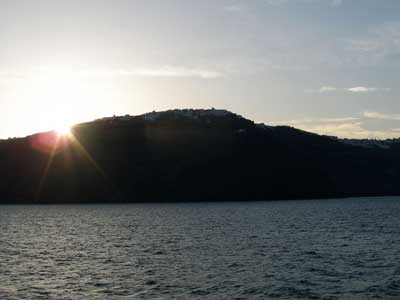
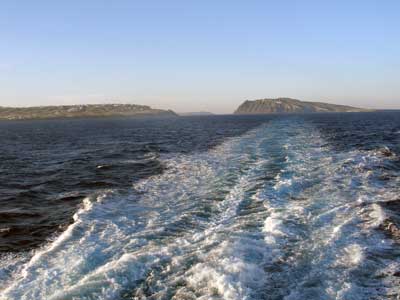
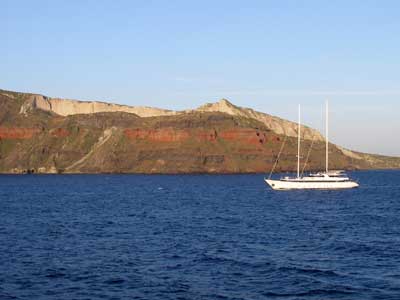
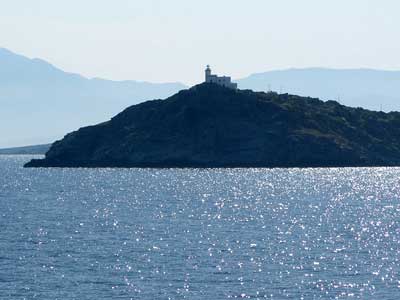
We arrived around 3 pm and took the metro to Monastiraki Square in downtown Athens. We checked into a hotel then spent the rest of the afternoon exploring some sites.
Athens is Greece's capital and largest city. It has been continuously inhabited for at least 7000 years, with a recorded history of some 3,400 years. Old Athens is divided into the Ancient Quarters (including the Monastiraki and Plaka districts with many old churches and sites) and the Archaeological Park (with the Ancient Agora, Acropolis and other temples).
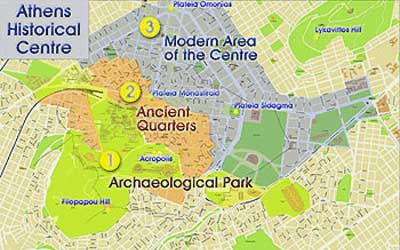
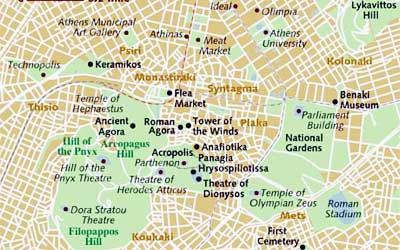
Layouts of old Athens
From Monastiraki Square we walked to Syntagma Square, where we had apparently just missed a changing of the guard. Fortunately the ceremony takes place daily every hour, so we were bound to catch it at some point. Sundays are special, however, because they wear a different uniform.
The Evzones (or presidential guard, as they are now called) are a special unit of the Hellenic Army. While their duties are now just ceremonial, they are symbols of bravery and courage. The unit was founded in 1868.
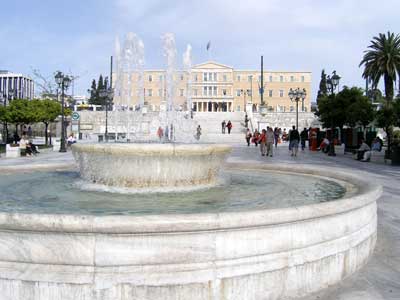

The ceremony takes place at the Tomb of the Unknown Soldier in front of the Hellenic Parliament and Presidential Mansion.
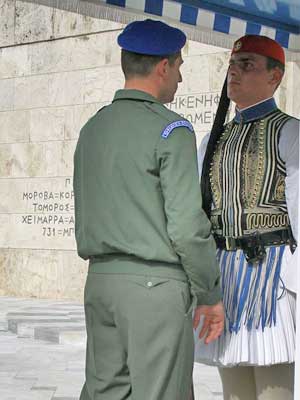
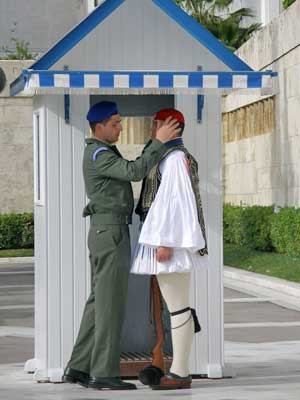
An inspection after having just taken his post
The Sunday outfit is based on the uniforms of the Kleftes and Armatoloi, two groups of Greek warriors during the War of Independence (1821) against the Ottomans. The white kilt (or foustanella) has 400 folds to represent the 400 years of Ottoman occupation. The blue and white fringes stand for the Greek flag.
The soldiers are selected for their height (these guys were big!), physical condition, psychological state and also character and morality. Training lasts for one month and includes exercises to keep the body and mind calm. Aside from learning to stand absolutely perfectly still for an hour, the soldiers must also not make eye movement or show any expression. Every soldier guards for an hour, 3 times in every 48 hours. During the changing, they work in pairs so they can coordinate their moves. The motions are carried out very slowly to protect their blood circulation after 60 minutes of immobility.
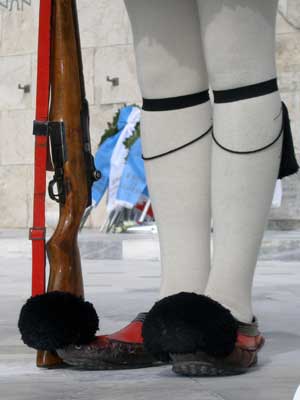
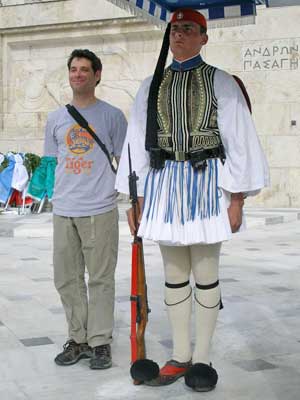
Each shoes (or tsarouchia) weighs over 6 1/2 pounds! The large woolen pompon was originally a way of making the nose of the shoe waterproof. During the time when the Evzones were a combat unit, the pompon hid a sharp blade which was used in hand-to-hand combat. Today it is simply decorative.
Nearby was the Metropolitan Cathedral of the Annunciation. Construction began in 1842 using marble from 72 demolished churches. 20 years later, it was complete.
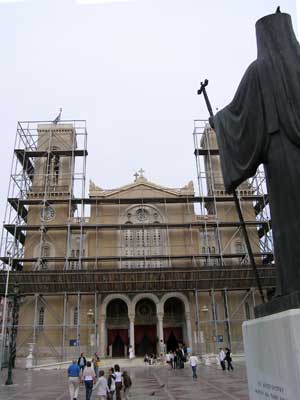

A statue of Archbishop Damaskinos (the Archbishop of Athens during World War II) stands guard.
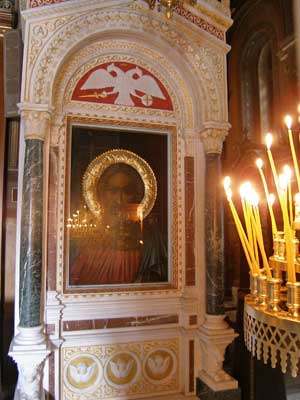
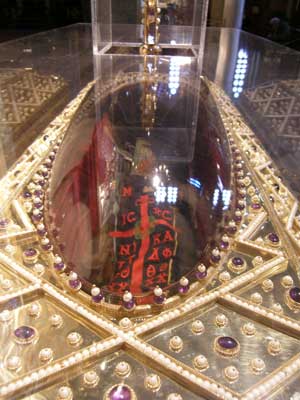
A shrine containing the bones of Saint Philothei is pictured on the right.
Philothei was born in Athens in 1522 to a wealthy family. When she was 14, she was married against her will to a brutal husband. Fortunately he died three years later. 10 years after that, both her parents died and she received the sizable estate. She used this money to build several monasteries for women, hospices, homes for the elderly and schools. She would also buy the freedom of Greeks slaves from the Ottomans, especially women taken to the harems (even those who were pregnant).
Unfortunately her monasteries were frequently plundered and she began to run out of money to pay off her debts from ransom money, duties, bribes and taxes owed to the occupying Turks. When four harem slave women escaped and ran to her for refuge, Philothei was beaten and put in prison. Friends paid for her release, but not too long after, four Ottoman mercenaries broke into her monastery and beat her severely. She never recovered and died of her injuries in 1589.
We then wandered into the Plaka, the oldest section of Athens. The pedestrian zone is filled with stores and restaurants. We took the opportunity to buy a few small icons.
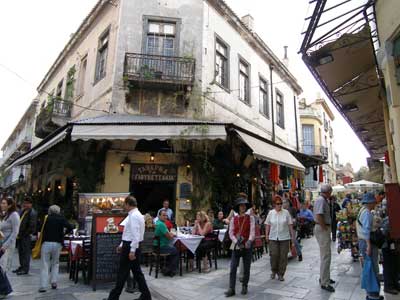
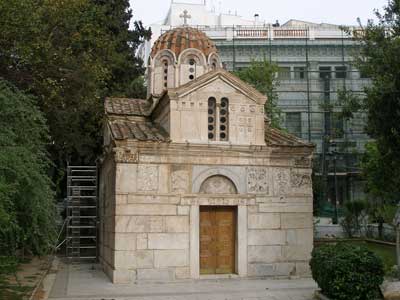
The Plaka... and Little Metropolitan Church (Panagia Gorgoepikoos - Agios Eleftherios or Virgin Mary - Saint Eleftherios). The Byzantine church, built at the end of the 12th century, is one of few churches that has maintained its original form.
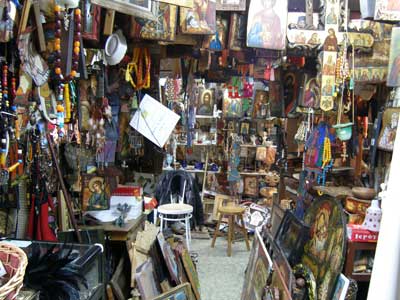
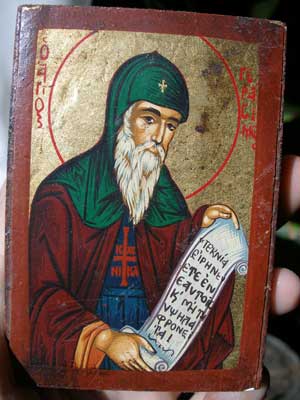
Inside the extremely full icon store
An icon (from the Greek "image") is a religious work of art from Eastern Christianity. They are usually portrait-style images of Christ, Mary, saints or angels. They can be painted on wood, cast in metal, carved in stone, embroidered on cloth, done in mosaic or frescos, printed on paper, etc. While the tradition may have existed earlier, it can traced back as early as the 3rd century. Unfortunately there was enormous destruction of these images during the Byzantine Iconoclasm (726 - 842).
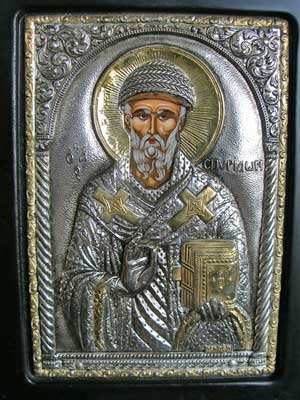
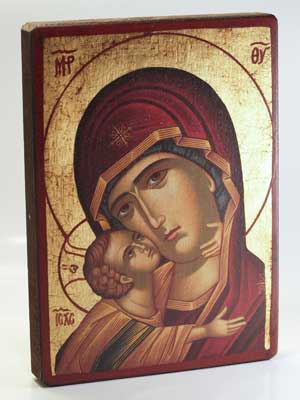
We wandered south of the hill that houses the Acropolis hill, past the Odeon of Herodes Atticus, and up to the top of Areopagus Hill (Mars Hill) where we got spectacular views of the entire city.
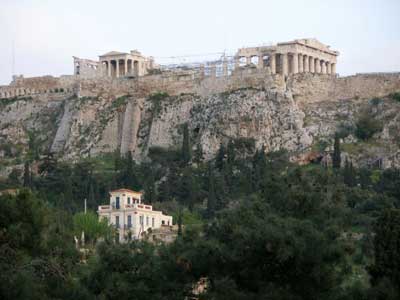
There is evidence that this 490-foot tall hill (once called Cecropia after the legendary serpent-man Cecrops, the first Athenian king) was inhabited as far back as 6,000 years ago. The word acropolis simply means 'highest point.' Although there are many other acropoleis in Greece, this is the one known as THE Acropolis.
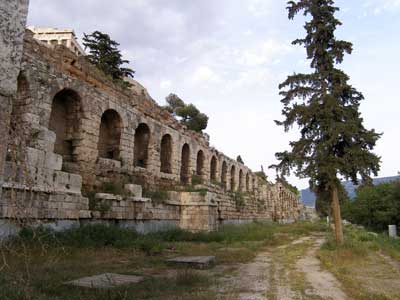
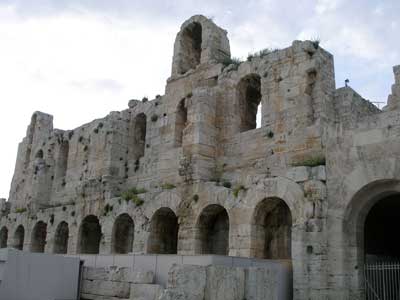
The Stoa of Eumenes ... and the outer wall of the Odeon of Herodes Atticus (or Herodeon, as it is called today)
The stoa was built between the Theater of Dionysos and the Herodeon as a promenade. It is named after its builder, King Eumenes II of Pergamum.

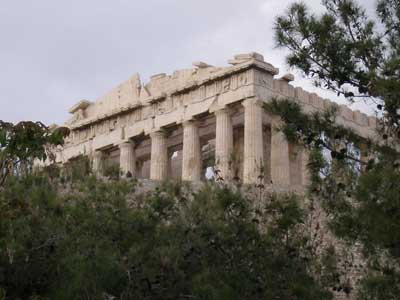
A glimpse of the Parthenon high above

The top of Areopagus or Mars (click for a larger view)
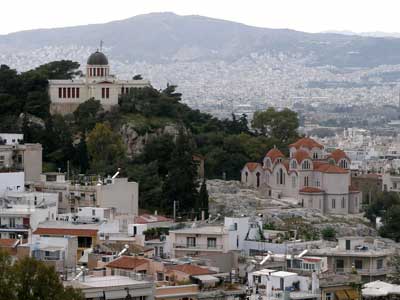
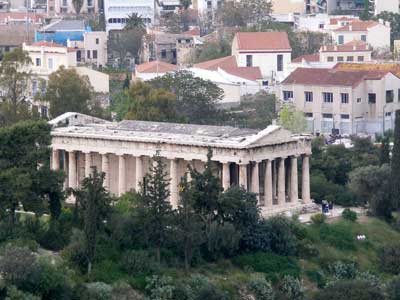
Views of the National Obervatory and Church of Agia Marina... and the Hephestion/Temple of Hephaestus
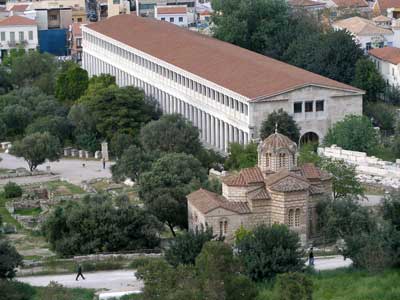
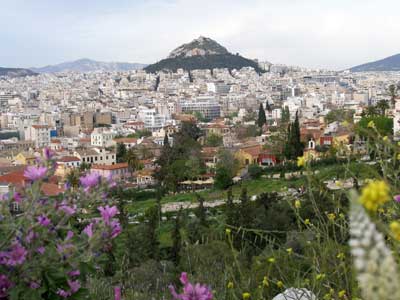
The Stoa of Attalos and the Church of the Holy Apostles in the Ancient Agora... and Mount Lycabettus
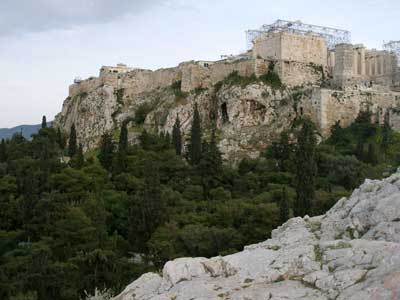
The Acropolis
It was almost sunset as we made our way back down a different direction. Melodic church bells filled the air. We tried to visit some smaller churches but they were all busy with evening services.

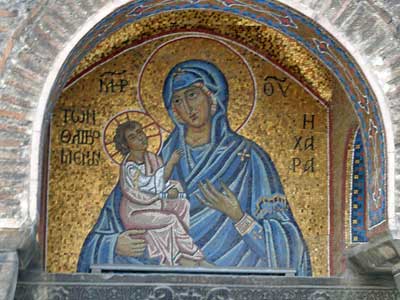
The Church of Panagia Kapnikarea is one of the city's oldest churches, built around 1050.... A mosaic of the Madonna and child
Eventually we made it back to our hotel room where we enjoyed some bread, tzatziki, halava and a local beer.

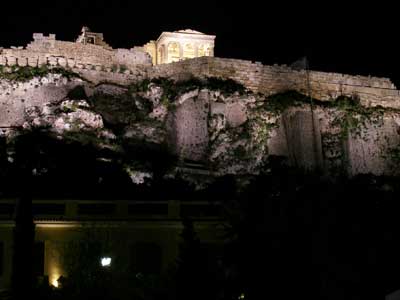
return • continue